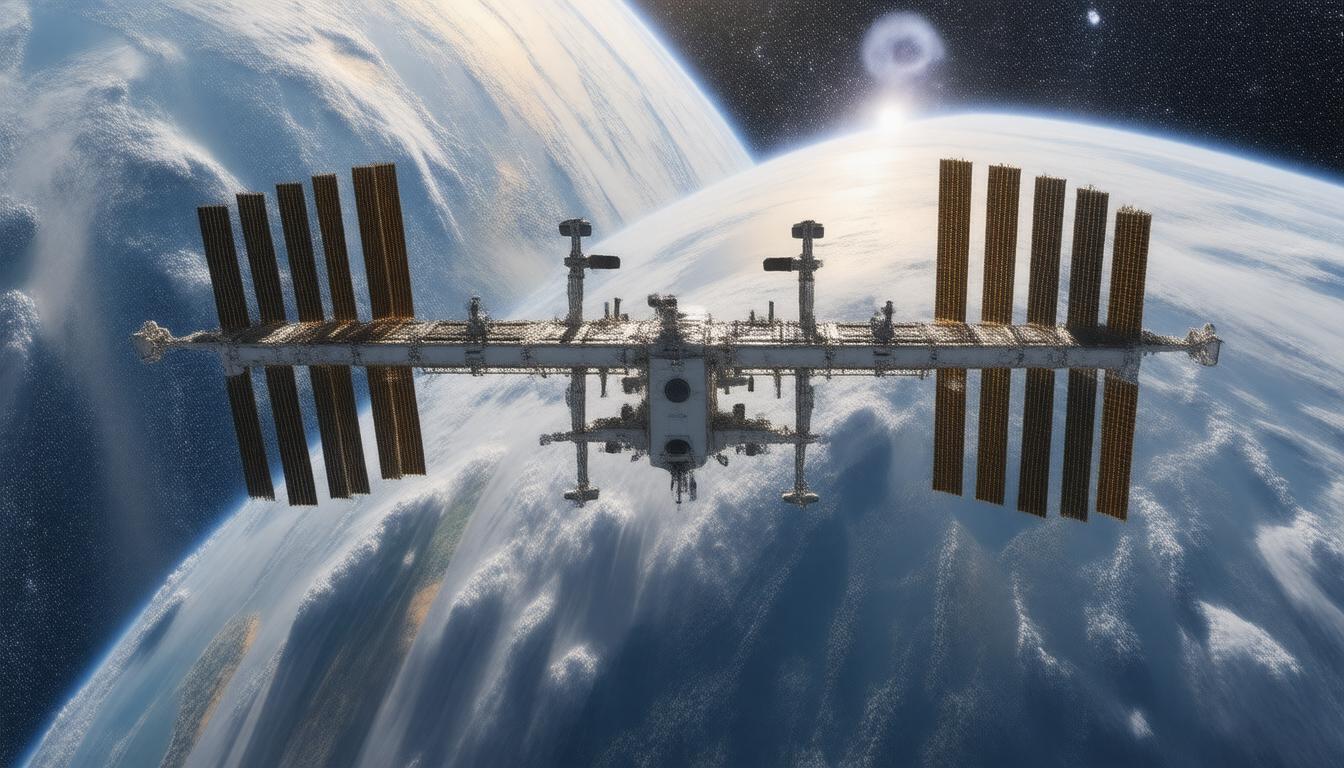The International Space Station (ISS) stands as a monumental achievement in human ingenuity and international collaboration. Orbiting the Earth at an altitude of approximately 400 kilometers (about 250 miles), the ISS serves as a state-of-the-art laboratory, observatory, and factory for scientific research and experimentation in microgravity. This article explores the history, structure, significance, and future of the ISS, highlighting its role as a gateway to the cosmos.
A Collaborative Journey
The ISS was born from the aspiration to combine the talents and resources of several nations. Its design phases spanned from 1984 to 1993, culminating in a robust partnership involving five primary space agencies: NASA (United States), Roscosmos (Russia), ESA (European Space Agency), JAXA (Japan), and CSA (Canadian Space Agency). This collective effort was motivated by the desire to push the boundaries of scientific knowledge and explore new frontiers in space.
Since its launch, which marked the beginning of the first module’s arrival on November 20, 1998, the ISS has grown into the largest space station ever constructed. Comprising multiple interconnected modules, including pressurized living quarters and laboratories, the ISS integrates advanced technologies and national contributions from various spacefaring nations.
Structure and Operation
The ISS is divided into two main segments: the Russian Orbital Segment (ROS) and the U.S. Orbital Segment (USOS), which includes contributions from multiple agencies. It encompasses a vast system of solar panels and radiators supporting its operational functions and scientific experiments. The station features eight docking ports for visiting spacecraft, facilitating regular resupply missions.
As of now, the ISS has housed multiple expeditions, with the latest, Expedition 72, beginning on September 23, 2024. Aboard, a diverse crew of astronauts conducts experiments that benefit life on Earth and the future of space exploration. It has been continuously inhabited since November 2, 2000, marking over 24 years of human presence in space—a testament to enduring collaboration and resilience.
Scientific and Technological Contributions
The ISS presents a unique environment for conducting scientific research in microgravity, enabling experiments that would be impossible on Earth. Areas of research encompass biology, human biology, physics, astronomy, and meteorology, among others. The microgravity environment allows scientists to explore fundamental questions about the laws of nature and to test technological advances crucial for future deep space missions.
Designated as a U.S. National Laboratory since 2005, the ISS promotes research and development across commercial, academic, and government sectors. This designation widens the scope of experiments conducted aboard the station, making it an invaluable asset for scientific advancement.
Furthermore, the ISS has been a platform for educational outreach, inspiring countless individuals in STEM fields through hands-on learning opportunities. Interactive content, educational resources, and lesson plans help cultivate a new generation of scientists and engineers.
The Future of the International Space Station
As we look ahead, the ISS is expected to remain operational at least until the end of 2030, pending discussions on its sustainability and extension of partnerships. Plans include the ongoing addition of new modules, such as Axiom Space’s Payload Power Thermal Module, which will enhance its capabilities. Ultimately, when the time comes, the ISS will be de-orbited safely utilizing a dedicated NASA spacecraft, marking the end of an era.
With over 279 astronauts from 22 different countries having visited the station, the ISS stands as a testament to international teamwork in outer space exploration. Its legacy lays the groundwork for future endeavors beyond low Earth orbit, notably missions to the Moon and Mars.
Conclusion
The International Space Station embodies the spirit of exploration and cooperation among nations on a mission to unlock the mysteries of our universe. As humanity ventures into deeper space, the ISS will continue to play a pivotal role, serving as a launchpad for scientific discovery and a symbol of unity in the quest for knowledge and exploration. Through its groundbreaking research and contributions, the ISS remains a beacon of hope for future generations eager to explore the cosmos.
Join Alpha Centi and give a unique boost to your career and professional profile today! [color=rgb(4, 53, 157)]https://alphacenti.org/join/[/color]


